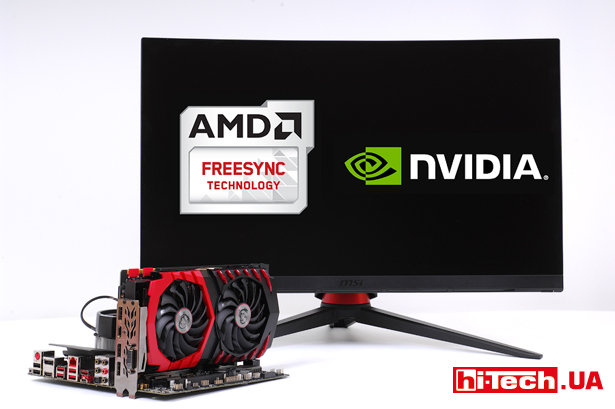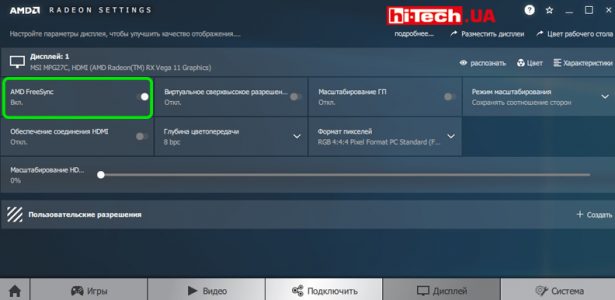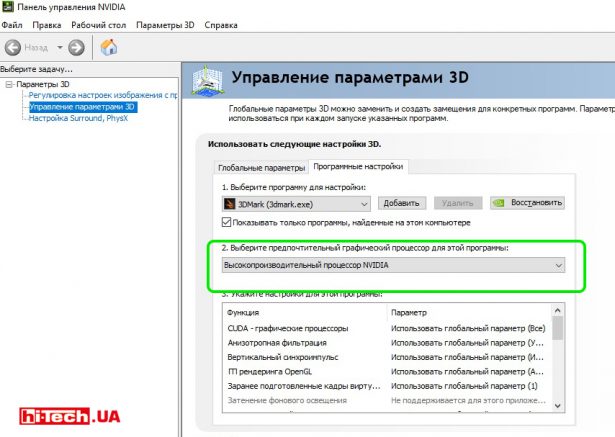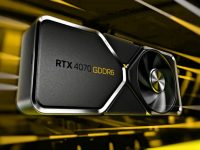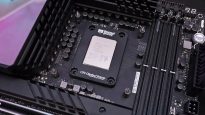Running AMD FreeSync with NVIDIA video card
26.10.18
NVIDIA G-Sync and AMD FreeSync technologies on the market allow you to synchronize the frame rate of 3D games with the screen refresh rate, which helps solve the problem of frame tearing.
Monitors with G-Sync support, all other things being equal, are noticeably more expensive. This is due to the presence of an additional proprietary module in them, part of the cost of which goes towards NVIDIA license fees.
But AMD FreeSync costs the monitor user, one might say, free.
There is a significant predominance of monitors with AMD FreeSync support on the market in terms of the number of different models. In addition, AMD FreeSync is starting to appear on TVs.
As you know, AMD FreeSync synchronization will only work with AMD Radeon (modern) video cards, and NVIDIA G-Sync, in turn, will work exclusively with NVIDIA GeForce video cards.
But enthusiasts have found a method to get around this limitation.
We also decided to do an experiment and enable AMD FreeSync on an NVIDIA video card.
Necessary condition
In order for AMD FreeSync technology to work with an NVIDIA video card, the system must have an AMD Radeon graphics processor in addition to the NVIDIA video card.
Moreover, this can be a GPU as part of another video card, or a GPU built into the processor.
And, of course, the monitor itself must support AMD FreeSync.
Launch
For the experiment, we selected a system based on the AMD Ryzen 5 2400G processor. This processor features an integrated Radeon Vega 11 GPU that has native FreeSync support.
A video card based on NVIDIA GeForce GTX 1070 Ti was installed in the same system.
Key components of the test platform:
Processor: AMD Ryzen 5 2400G with integrated video Radeon Vega 11
Motherboard: MSI B450M Mortar
Discrete video card: MSI GeForce GTX 1070 Ti GAMING 8G
Operating system: Windows 10 Pro 64 bit
Monitor with AMD FreeSync support: MSI Optix MPG27C
To begin in the BIOS settings of the motherboard, you must force enable the graphics adapter integrated into the processor.
After loading the operating system (in our case, Windows 10), two video adapters will appear in the device manager: AMD Radeon Vega 11 and NVIDIA GeForce GTX 1070 Ti.
You must install the drivers for both of these video devices.
Please note that the video signal cable (in our case, the connection was made via HDMI) must be connected to the video output on the motherboard (provided by the graphics adapter built into the processor), and not on the NVIDIA discrete video card.
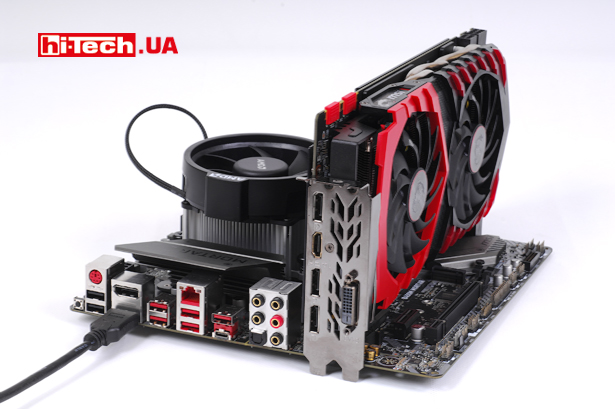
After installing the drivers in the Radeon Vega 11 settings, you need to check that the AMD FreeSync feature is activated.
Now go to the settings of the NVIDIA GeForce GTX 1070 Ti and in the “manage 3D settings” section, forcefully select the NVIDIA graphics adapter for each application (game) you need.
Note also that the choice of graphics adapter for individual applications (games) has recently become available in the Windows 10 system itself.
All that remains now is to launch the game and enjoy a smooth picture without frame tearing with AMD FreeSync technology running.

Работа AMD FreeSync с видеокартой NVIDIA GeForce GTX 1070 Ti хорошо заметна в специальном тесте AMD FreeSync Demo (небезызвестная мельница-ветряк)
It turns out that in games or benchmarks, all processing takes place on the basis of a powerful discrete graphics card NVIDIA GeForce GTX 1070 Ti, and images are relayed to the video output provided by the AMD Radeon Vega 11 graphics core built into the processor, and at the same time the system provides AMD FreeSync technology.
Theoretically, such retransmission adds a microscopic delay to another video output. It is difficult to say whether a person is able to notice this additional delay.
Disadvantages
We would categorically not recommend placing a big bet on this mode of operation. Such activation of AMD FreeSync is not provided by either AMD or NVIDIA.
At any moment, some software limitation may occur, and the method will stop working.
During the experiments, not everything went smoothly: sometimes in the windows of some applications related to the operation of video adapters, the image was displayed incorrectly.
In general, running AMD FreeSync on anNVIDIA graphics card is more of a fun experience for enthusiasts. It’s interesting to try this, maybe someone will actually put it into practice.
By the way, the reverse option using NVIDIA G-Sync on AMD Radeon video cards according to the specified scheme is also possible. But the need for this seems completely far-fetched. It is difficult to imagine a system that will have two video cards with a more powerful AMD board and at the same time there will be a monitor with NVIDIA G-Sync support.
We thank the companyMSIfor the equipment provided for the experiments
Engineer of the Test Laboratory
Don't miss interesting news
Subscribe to our channels and read announcements of high-tech news, tes
Oppo A6 Pro smartphone review: ambitious

Creating new mid-range smartphones is no easy task. Manufacturers have to balance performance, camera capabilities, displays, and the overall cost impact of each component. How the new Oppo A6 Pro balances these factors is discussed in our review.
Top news of 2025 on hi-tech.ua

Our editorial team traditionally sums up the results every year. We recently showcased the editors’ top devices. Now it’s time to share the top news stories from hi-tech.ua in 2025.
Google will allow you to change your email address Google post
Google is preparing to launch a new feature that will allow users to change the email address associated with their account, thereby abandoning their old Gmail addresses.
Logitech G304 X Lightspeed is battery-powered instead of batteries and has a 1000 Hz polling rate Logitech mouse
Logitech G304 X Lightspeed features the company’s Hero 25K sensor. It supports sensitivity in the range of 100 to 25,000 DPI, expandable up to 25,600 DPI.

